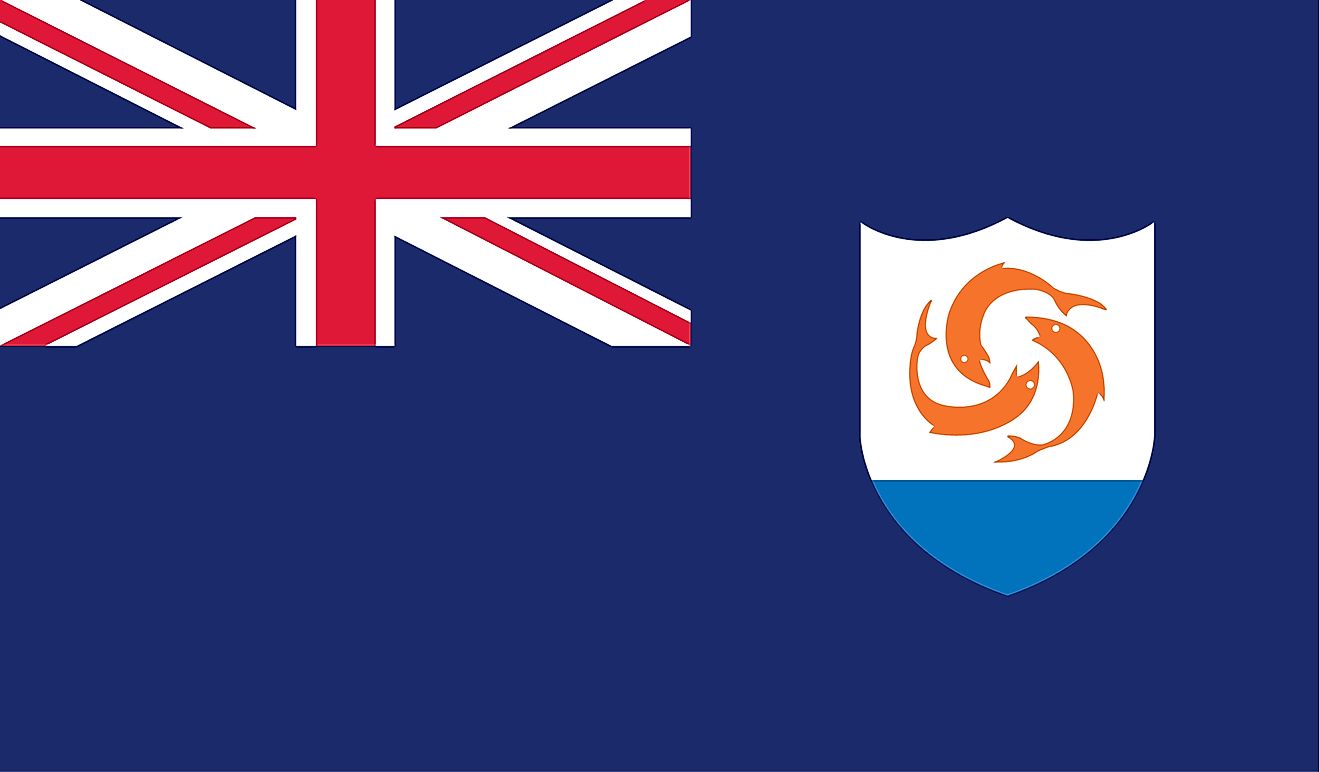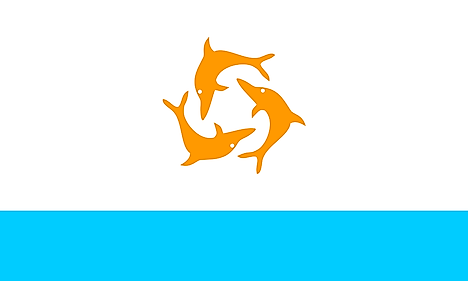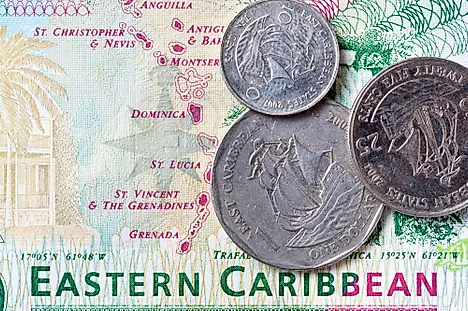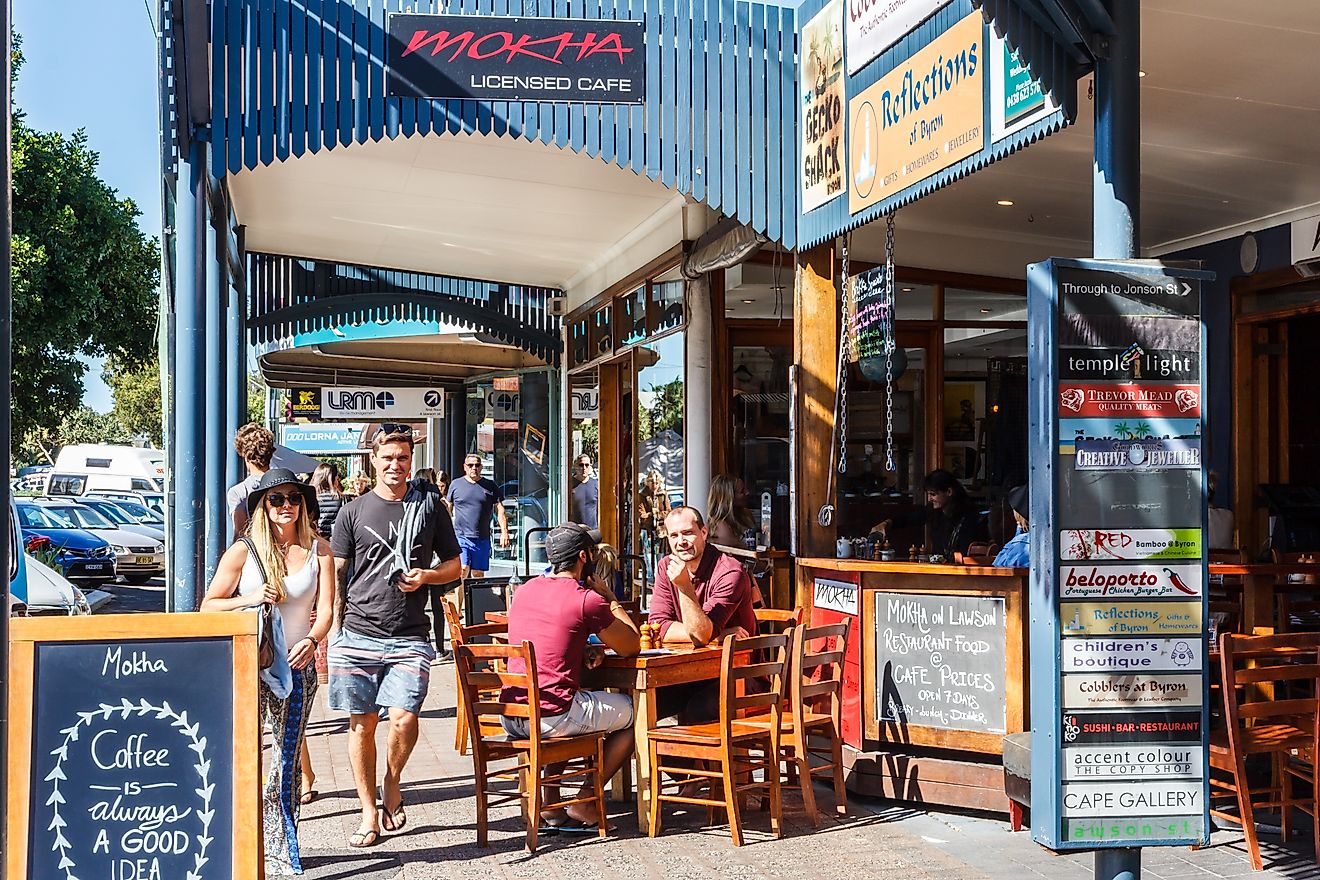Flags, Symbols & Currency of Anguilla

The flag of Anguilla was officially adopted and first hoisted on 30 May 1990.
As an Overseas territory of the United Kingdom, the National flag of Anguilla consists of a Blue Ensign with the flag of the UK in the upper hoist-side quadrant and the Anguillan coat of arms centered in the outer half of the flag. The coat of arms depicts three orange dolphins in an interlocking circular design on a white background with a turquoise-blue field below. The white color symbolizes peace while the blue base represents the surrounding Caribbean Sea, as well as faith, youth, and hope. The three dolphins stand for strength, wisdom, and friendship. The flag has a height to width proportion ratio of 1:2.
History of the flag of Anguilla
The Union Jack of Great Britain was the first flag flown in Anguilla before 1967. When the islands of Anguilla, Nevis, and Saint Christopher was brought together as the associated state, the triple palm flag was chosen. This flag was a green-yellow-blue vertical tricolor with a Palm tree in the center and represented destiny, humility, and pride. The green color represented Saint Christopher, the yellow color represented Nevis, and the sky blue color represented Anguilla. In July 1967 when Anguilla unilaterally declared its independence, it chose a new flag. This flag nicknamed the ‘mermaid’ flag was designed by a group of Anguillans living in San Francisco. The mermaid flag featured a blue oval on a red field with an all-white image of two mermaids along with a shell in the center. It also contained the words “Republic of Anguilla” written in gold. This flag lasted only a few months and in September 1967, the flag was changed to the more popular dolphin flag. In 1969, Anguilla came again under British rule and in 1980 it became a separate British colony in 1980. The current flag was first hoisted in 1990.
Symbols of Anguilla
Coat of Arms of Anguilla

The Anguillan coat of arms features three interlocking dolphins jumping out of the blue seawater. Their orange color symbolizes endurance, unity, and strength, and the circular motion is for continuity. The white background of the coat of arms represents peace and tranquillity, while the turquoise-blue base represents the surrounding sea, as well as faith, youth, and hope.
National Motto
"Strength and Endurance"
National Anthem
As Anguilla is an Overseas Territory of the United Kingdom, “God Save the Queen” is the official national anthem of Anguilla.
The Currency of Anguilla is the East Caribbean dollar (XCD)
The current official currency of Anguilla is the East Caribbean dollar ($, XCD). The East Caribbean dollar is also recognized as the official currency in all countries belonging to the organization of the Eastern Caribbean States (OECS). The East Caribbean dollar was first brought into circulation in 1965 replacing the British West Indies dollar.
The EC$ is subdivided into 100 cents.
Coins
Coins of the currency were circulating in 1, 2, 5, 10, and 25 cents denominations, and the 1 dollar was introduced at the beginning of 1981. Some of the coins have changed shape over the years, and they are composed of cupro-nickel and aluminum. The Ian Rank-Bradley design for Queen Elizabeth II’s portrait was adopted in 2002. The circulation of 1 and 2 cent coins was withdrawn in July 2015.
Banknotes
The Eastern Caribbean Currency Authority released notes of 1, 5, 20, and 100 dollars in 1965. Printed on the notes was the portrait of Queen Elizabeth done by Pietro Annigoni in 1956. The Eastern Caribbean Central Bank added the 10 dollars note in 1985 and the 50 dollars note in 1993. The institution also omitted the 1 dollar note. Banknotes issued by the Bank from April 1, 2008, excluded the country code letters and the barcode. Starting in 2012, the Bank rolled out a series of banknotes featuring Braille in the 10, 20, 50, and 100-dollar varieties.
Historical Currencies of Anguilla
The gold standard was introduced in the British West Indies in 1704 through the proclamation of Queen Anne. The British introduced 1/4, 1/8, as well as 1/16 fractional ‘Anchor dollars' to be used in the British West Indies and Mauritius. Subsequently, copper fractional dollars were issued to circulate in Sierra Leone and Mauritius as well as in the British West Indies. Efforts to get the British sterling silver coinage in circulation in the colonies began in 1825 with an imperial order-in-council. Accounts in the region were kept in both sterling and dollars going into the 19th century. British Guiana, the Leeward Islands, Barbados, the Windward Islands, and Trinidad and Tobago participated in the West Indian Currency Conference in 1946 when they committed themselves to the creation of a common decimal currency system that was based on the West Indian dollar in replacement of the three Boards of Commissioners of currency that existed at the time. The British administration introduced the British West Indies dollar in 1949 in the Eastern Caribbean territories as well as in British Guiana. The new currency began circulating in 1950 when the Caribbean Currency Board (BCCB) was created in Trinidad. The British Virgin Islands together with Trinidad and Tobago subsequently withdrew their commitment from the new currency. The Eastern Caribbean dollar replaced the British West Indies dollar while the Eastern Caribbean Currency Authority was founded to replace the BCCB in 1965.













